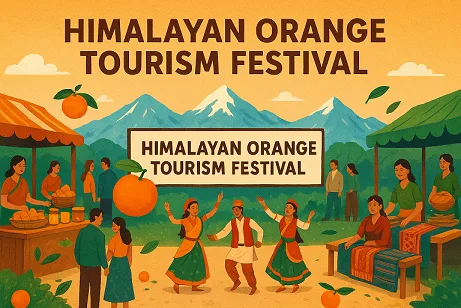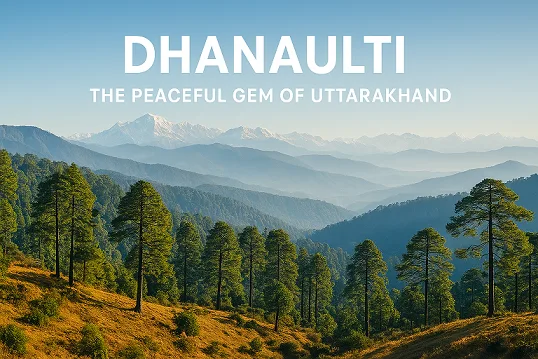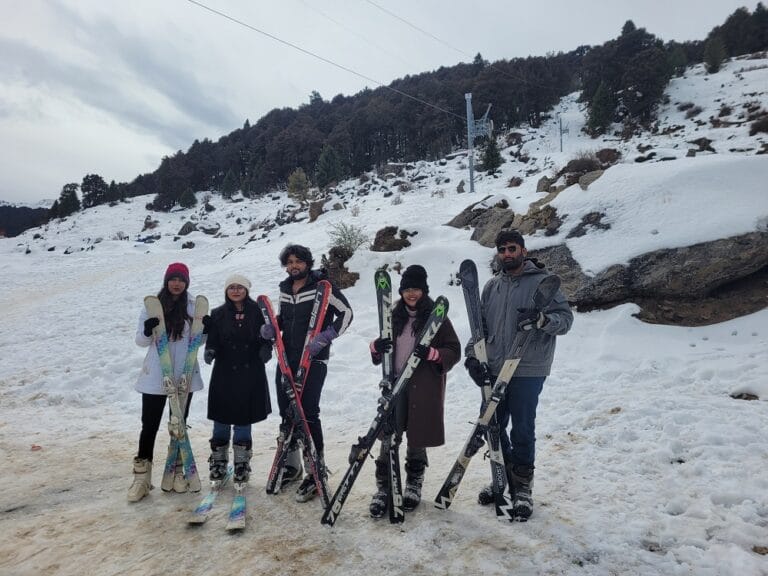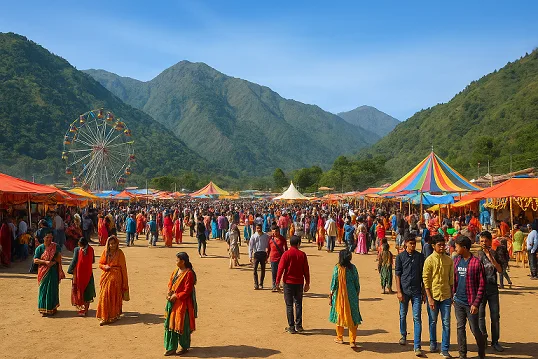Bissu Mela – A Tribal Celebration of Jaunsari Culture in Uttarakhand
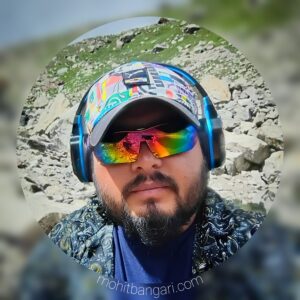
Mohit Bangari
Explore Himalaya With Me!!
Facebook
Email
WhatsApp
Twitter
LinkedIn
Tumblr
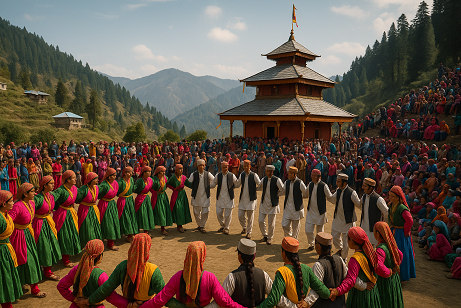
When the snow melts and fields are ready for ploughing, the Jaunsari tribe of Uttarakhand gathers to celebrate their traditional festival, Bissu Mela. Held in the scenic region of Jaunsar-Bawar, this fair is more than just a cultural event—it’s a spiritual connection with the land, the crops, and their goddess Santura Devi.
Let’s explore in depth this unique tribal festival, its origins, rituals, upcoming dates, travel info and everything else that makes Bissu Mela a treasure of Himalayan heritage.
Table of Contents
What is Bissu Mela?
Bissu Mela is a spring harvest festival celebrated by the Jaunsari community—a tribal group living in the Jaunsar-Bawar region, located between Dehradun and Chakrata in Uttarakhand. The mela is held every year around mid-April, mostly coinciding with Baisakhi.
This fair is organised to worship Santura Devi Mata, who is considered the kuldevi (clan goddess) of Jaunsari people. The festival is all about celebrating agricultural abundance, performing rituals for good harvest, and enjoying folk performances, community feasting, and bonding.
Where is Bissu Mela Celebrated?
The main celebration of Bissu Mela happens at the Santura Devi Temple, situated near Kalsi-Chakrata road, about 5–6 km uphill from Kempty area. The temple is surrounded by lush pine forests and hilly terrain. Nearby villages like Lakhamandal, Koti-Kanasar, Tuini, and others also participate actively in this festival
.
When is Bissu Mela Celebrated?
Bissu Mela is held in the month of Chaitra (March–April), according to the Hindu lunar calendar. It generally falls between 10th and 20th April, with the main day often celebrated on Chaitra Purnima.
Upcoming Bissu Mela (2026)
In 2026, Bissu Mela is expected to be celebrated around April 13 to April 16, depending on the local lunar calendar.
Past Bissu Mela (2025)
In 2025, the fair was celebrated on April 14, and saw participation of thousands of devotees, folk artists, and tourists. There were vibrant performances, local food stalls, wrestling competitions, and Santura Devi’s grand aarti in the evening.
Historical Background and Mythology
Bissu Mela is not a new-age tourism event. It is a centuries-old tradition among the Jaunsari people. As per legends, Santura Devi was a powerful goddess who protected the people of Jaunsar-Bawar from drought, disease, and enemies. During earlier times, the tribal headmen and gram devtas used to bring offerings of grains, milk, and goat at this temple before starting the sowing season.
The word “Bissu” is believed to come from “Vishu” or “Bishu”, meaning new year or spring renewal, commonly used in many North Indian tribal dialects. Some scholars also connect the name with Vishuva Sankranti, the time when day and night are equal.
Verified by Government of India (Utsav Portal)
Bissu Mela is not just a local celebration—it is officially recognised by the Ministry of Culture, Government of India. You can find detailed information about the event on their national event portal:
👉 Bissu Mela on Utsav.gov.in
This listing confirms its cultural and historical importance, and helps travellers and cultural researchers to explore the mela with more authenticity. The government portal mentions Bissu Mela as a celebration of community brotherhood, tribal customs, and agriculture-related rituals, primarily in the Santura Devi temple region of Jaunsar-Bawar.
It also promotes Bissu Mela as a valuable part of India’s intangible tribal heritage, encouraging travellers to attend the fair and support local artisans and performers.
Who Celebrates Bissu Mela?
The main community that celebrates this festival is the Jaunsari tribe, which belongs to the Scheduled Tribe (ST) category in Uttarakhand. They speak Jaunsari language, follow a mix of Hinduism and animism, and have a deep-rooted culture of devta puja, community-based farming, and oral folk traditions.
Unlike other Uttarakhand festivals that are caste-based or deity-specific, Bissu Mela is entirely tribal and agricultural. It is not celebrated in Garhwal, Kumaon or Terai regions.
Traditions and Rituals of Bissu Mela
This fair is a lively mix of spiritual devotion and tribal festivity. Key traditions include:
1. Santura Devi Darshan
The day starts with the worship of Mata Santura Devi. Devotees come barefoot, carrying offerings of milk, grains, turmeric, and flowers. Special aarti and jhaanki processions are organised.
2. Traditional Jaunsari Dance
Folk groups perform Harul, a circle dance of Jaunsar-Bawar. People wear colourful woollen costumes and sing traditional ballads while dancing in rhythmic movements.
3. Folk Singing and Dhol-Damau
Local artists sing folk songs in Jaunsari dialect, backed by the traditional dhol-damau beats. Songs often tell stories of love, bravery, and devotion to Santura Devi.
(Note: No specific Bissu Mela folk song lyrics were found online, but if you have access to any lyrics or recordings, I can add them.)
4. Local Wresting Matches
Younger boys and men participate in traditional kushti (wrestling), which is a big attraction for locals. Prizes include goats, food items or money.
5. Community Feast
People from surrounding villages prepare local dishes like mandua roti, urad dal, bhang ki chutney, and share them in a community feast.
Tourism and Local Impact
With increasing interest in tribal and cultural tourism, Bissu Mela is slowly gaining popularity among outsiders. Many travellers and culture enthusiasts now visit Chakrata in April to experience this rural fair.
However, the mela still remains authentic and non-commercial. It provides income to local artists, weavers, and shopkeepers. Local administration supports the mela by providing water, roads, and basic facilities.
How to Reach Bissu Mela Location
By Road:
Nearest big town: Chakrata (approx. 90 km from Dehradun)
From Chakrata, drive or take local transport to Santura Devi temple, about 5 km uphill near Kalsi–Kempty road.
By Rail:
Nearest station: Dehradun Railway Station (approx. 100 km)
You can take shared taxi or bus to Chakrata or Mussoorie and continue onwards.
By Air:
Nearest airport: Jolly Grant Airport, Dehradun
From airport, reach Chakrata by road (approx. 3.5–4 hours).
Why You Should Visit Bissu Mela?
If you want to explore the real culture of Uttarakhand beyond temples and treks, Bissu Mela is a must-visit.
You’ll witness a pure tribal gathering
Get to experience authentic Jaunsari music and cuisine
Understand the connection between land, faith, and farming
Interact with warm and welcoming locals
Related Articles from My Blog
I have already written some related articles that add more depth on Uttarakhand’s cultural side:
These posts cover Kumaoni, Garhwali, and tribal festivals in a very detailed way.
Conclusion
Bissu Mela is a hidden cultural gem of Uttarakhand, celebrated in the lap of Himalayas by the proud and vibrant Jaunsari tribe. With its unique rituals, folk songs, traditional costumes and spiritual energy, this mela brings together faith, farming, and festive joy.
Whether you’re a traveller, culture lover, or photographer, the 2026 Bissu Mela could be your chance to witness something raw and unforgettable. Plan your trip around mid-April, and don’t forget to enjoy the dhol-damau and a bite of bhang ki chutney!
Also Read
You can also explore more on Himalayan treks like Darma Valley, Adi Kailash, and others on my website mohitbangari.com, where I share full guides, routes, permit tips and cultural info.
By – Mohit Bangari
Do you know about Ramman festival of Salud-Dungra village? It’s one of the intangible world cultural heritage of India in UNESCO. You can read a detailed article on this topic here.
Facebook
Email
WhatsApp
Twitter
LinkedIn
Tumblr
Related Post
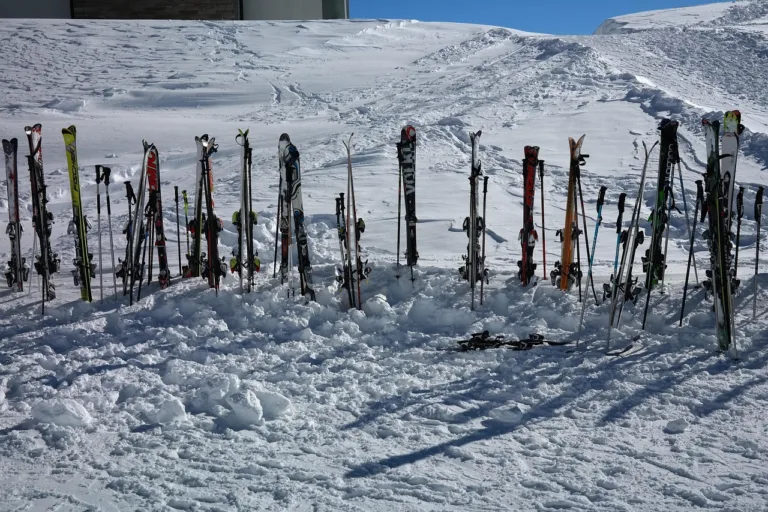
Adventure
Mohit Bangari
30 November 2025

Mohit Bangari
Explore Himalaya With Me!!
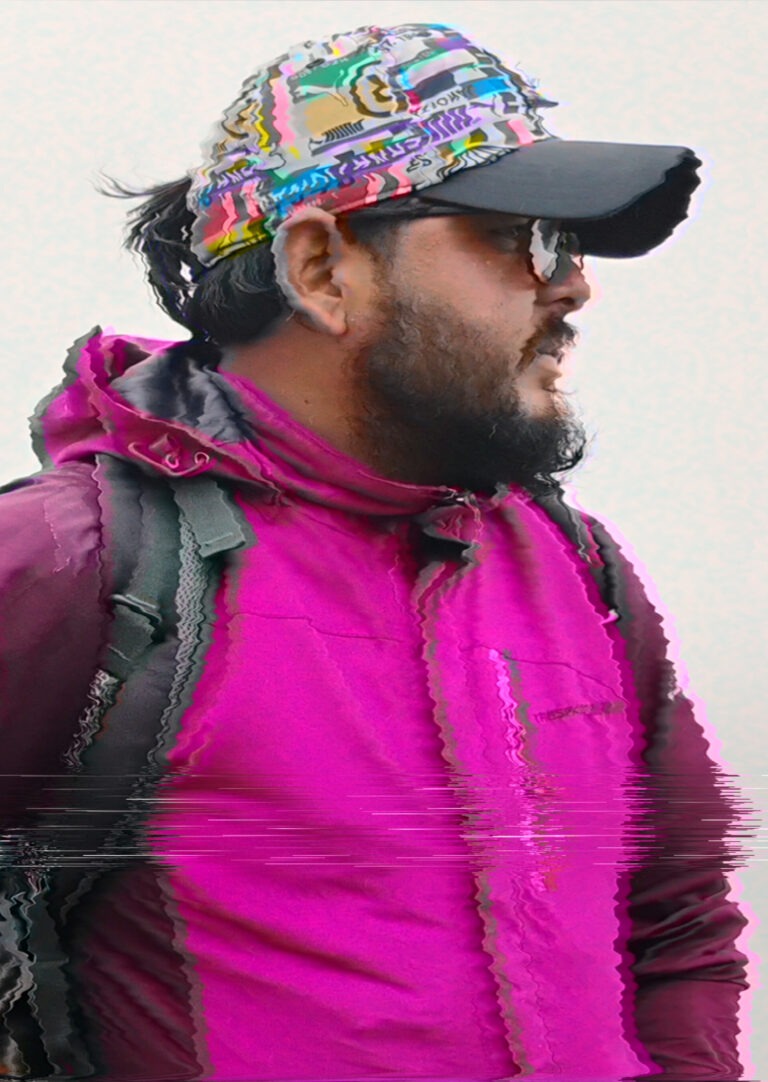

Explore the beauty and cultures of the Himalayas, from Jammu and Kashmir to Arunachal Pradesh, Tibet and Nepal. My blog shares stories, pictures, and fun articles about this amazing region. Come along on a journey where each mountain has a tale and every valley hides a treasure. Join me as I discover the magic of the mountains together.
Welcome to my Himalayan Adventure!

